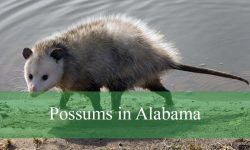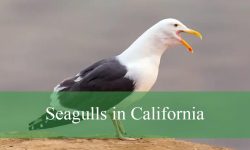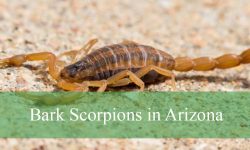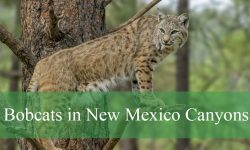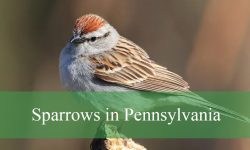North Carolina’s birds represent a fascinating array of species that thrive across the state’s varied landscapes. From the coastal marshes to the Appalachian highlands, North Carolina’s birds offer birdwatchers and nature enthusiasts endless opportunities to discover and appreciate their beauty.
Whether you’re drawn to the vibrant colors of songbirds or the graceful flight of raptors, the diverse avian life in North Carolina is a testament to the state’s rich ecological tapestry.
The article focuses on 39 bird species found in North Carolina. It explores their characteristics and how to identify them.
Different Types of North Carolina Birds
White-throated Sparrow
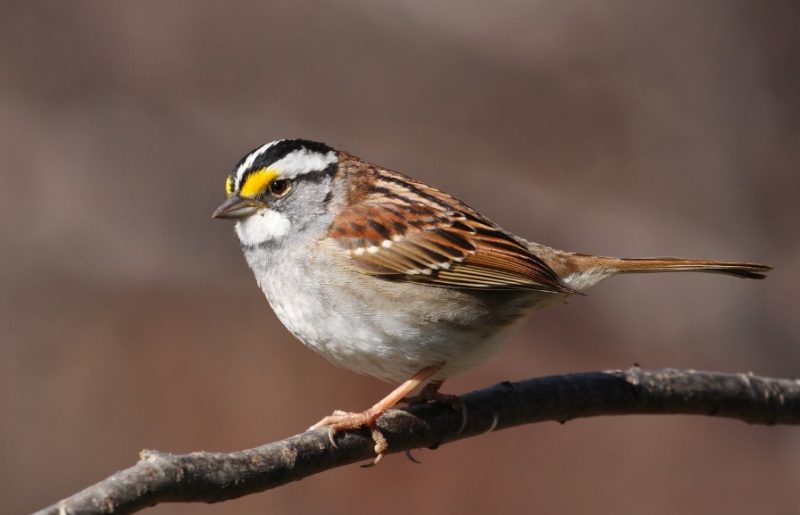
In North Carolina, white-throated sparrows are a common winter sight, showing up on 35% of checklists from October through mid-May. Their characteristic black and white striped head, brilliant white throat, and yellow patch between eye and bill make them easily recognized. Their underparts are gray, while their backs are brown.
The White-throated Sparrow is a migratory bird that is 6.3–7.1 inches long, has a wingspan of 7.9–9.1 inches, and weighs 0.8–1.1 ounces. They spend the winter months migrating south to the Pacific Coast and eastern and southern states in the United States, where they breed mostly.
They are commonly found in large flocks, foraging on the ground in forests, wooded areas, and along wooded margins. They mostly eat insects, especially in the summer, and seeds from grasses and weeds, as well as fruits like blueberries and grapes.
Provide millet and black oil sunflower seeds on platform feeders to draw white-throated sparrows to your backyard.
Eastern Towhee
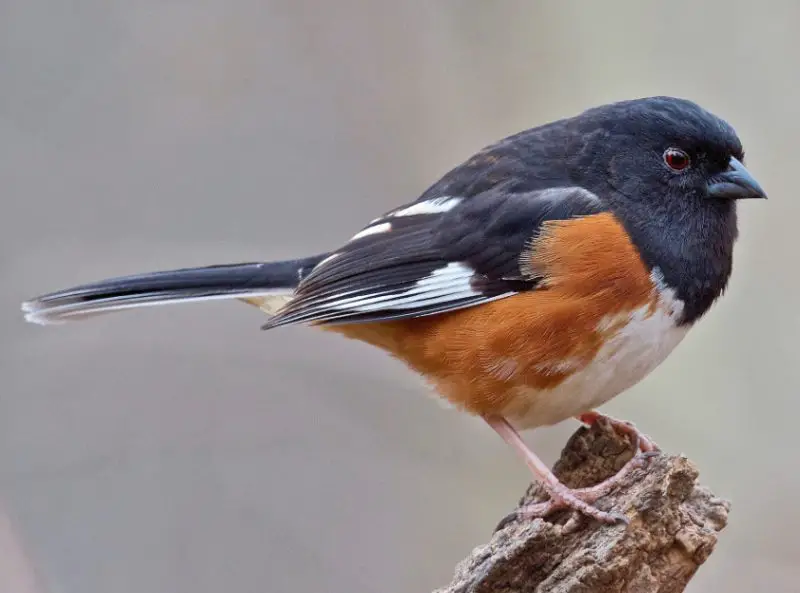
Eastern Towhees can be seen all year round in North Carolina; they are noted on 37% of summer checklists and 25% of winter checklists. These beautiful giant sparrows are about the size of a robin, with a reddish-purple belly, long tails, black head, throat, and back, and a white belly on the males. Although they are brown instead of black, females are similar.
Eastern Towhees are year-round residents of the southeastern states of the United States, measuring 6.8–8.2 inches in length, 7.9–11.0 inches in wingspan, and weighing 1.1–1.8 ounces. However, during the winter, these birds move south.
They can frequently be seen scrounging among the undergrowth near the edges of forests and thickets. Create overgrown borders and place platform feeders filled with cracked corn, millet, black oil sunflower seeds, and hulled sunflower seeds to draw them to your backyard.
American Robin
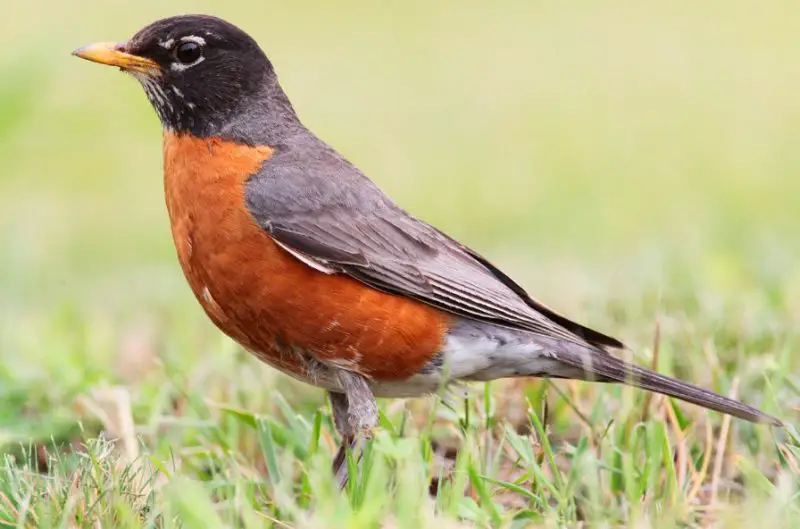
The black head and back of the American Robin, along with its red or orange breasts, help to identify it. Its dimensions are 7.9–11.0 inches (20–28 cm) in length, 2.7–3.0 ounces (77–85 g) in weight, and 12.2–15.8 inches (31–40 cm) in wingspan.
In North Carolina, American Robins are year-round residents and are included in 36% of summer checklists and 30% of winter checklists. They typically roost in trees throughout the winter and are frequently spotted on lawns, eating earthworms. They do well in a variety of settings, such as parks, fields, and woodlands.
Provide sunflower seeds, suet, peanut hearts, fruit, and mealworms to entice American Robins to your garden. Disperse food on the ground or use platform feeders. Adding natural plants that bear berries, such as dogwood, juniper, sumac, and hawthorn, can also attract them.
Northern Mockingbird
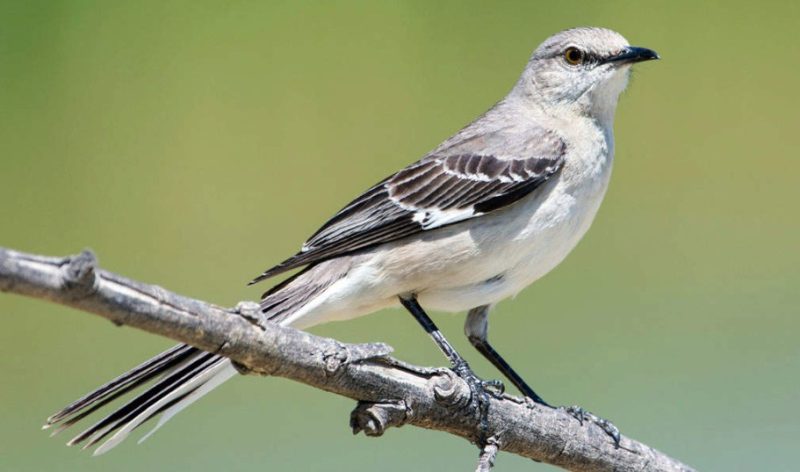
Its characteristic white wingbars that are visible when in flight, along with its gray-brown plumage and slightly paler underbelly, help identify the Northern Mockingbird. It weighs 1.6–2.0 ounces (45–58 g), is 8.3–10.2 inches (21-26 cm) long, and has a wingspan of 12.2-13.8 inches (31–35 cm).
Northern Mockingbirds are year-round residents of North Carolina and are included in 27% of winter checklists and 31% of summer checklists. They are medium-sized songbirds that actively defend their territory. They are usually observed alone or in couples. They have small heads and lengthy tails. Men can sing all day and all night, having learned up to 200 songs.
Plant fruiting trees or shrubs, such as hawthorns, mulberries, and blackberry brambles, to draw Northern Mockingbirds to your backyard. They are drawn to open grass areas, although they are not frequent feeder visitors.
Blue Jay
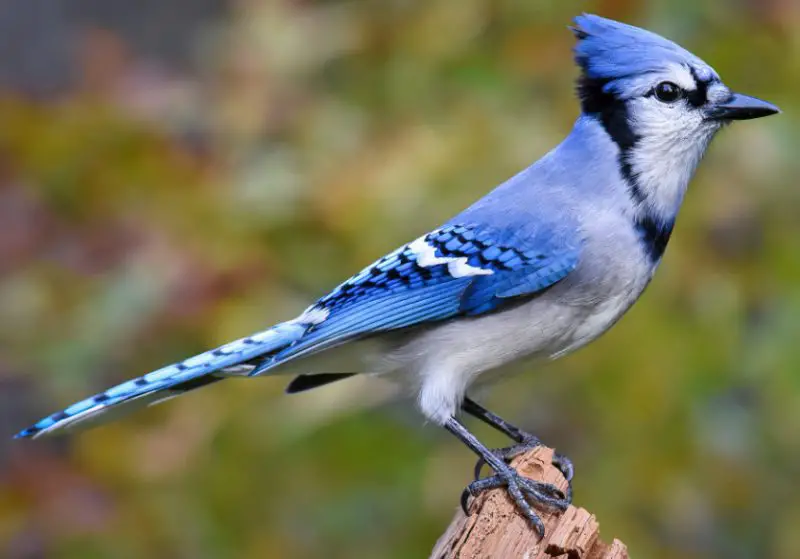
The distinctive features of the Blue Jay include its blue and black back, white undersides, and blue erect crest. It weighs 2.5–3.5 lbs (70–100 g), is 9.8–11.8 inches (25–30 cm) long, and has a wingspan of 13.4–16.9 inches (34–43 cm).
In North Carolina, blue jays can be seen all year round; they are listed in 32% of winter checklists and 35% of summer checklists. These big songbirds are well-known for their loud calls and kin-focused habits. Some may move west for the winter, although they are found in southern Canada and the eastern US states.
Provide peanuts, sunflower seeds, and suet on open tray or hopper feeders to draw Blue Jays to your backyard. For easy access, they favor platform feeders, though they will also take pleasure in a birdbath. They can visit backyard feeders and are frequently observed in forests, particularly in the vicinity of oak trees.
Downy Woodpecker
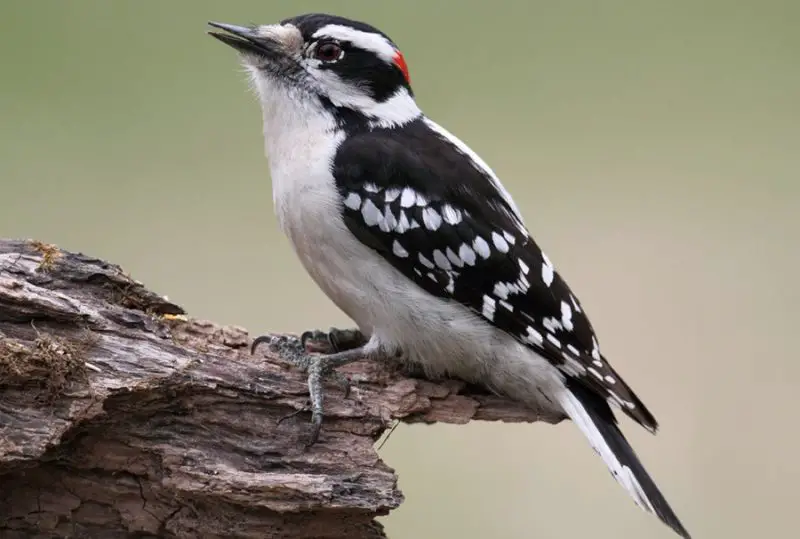
The distinctive red patch on the back of the skull and its black and white plumage make the Downy Woodpecker easy to identify. It is 5.5–6.7 inches (14–17 cm) long, 0.7–1.0 oz (21-28 g) in weight, and 9.8–11.8 inches (25–30 cm) in wingspan.
In North Carolina, downy woodpeckers are year-round residents and are included in 26% of summer checklists and 35% of winter checklists. These are little birds that you frequently see at backyard feeders, frequently in flocks with other birds like nuthatches and chickadees. Though they are smaller, they resemble the hairy woodpecker.
Provide suet, black oil sunflower seeds, millet, and peanuts on platform feeders to draw downy woodpeckers to your garden. Their primary food sources include insects, beetle larvae, berries, acorns, and grains. They can be found in backyards, municipal parks, and woodlots.
Mourning Dove
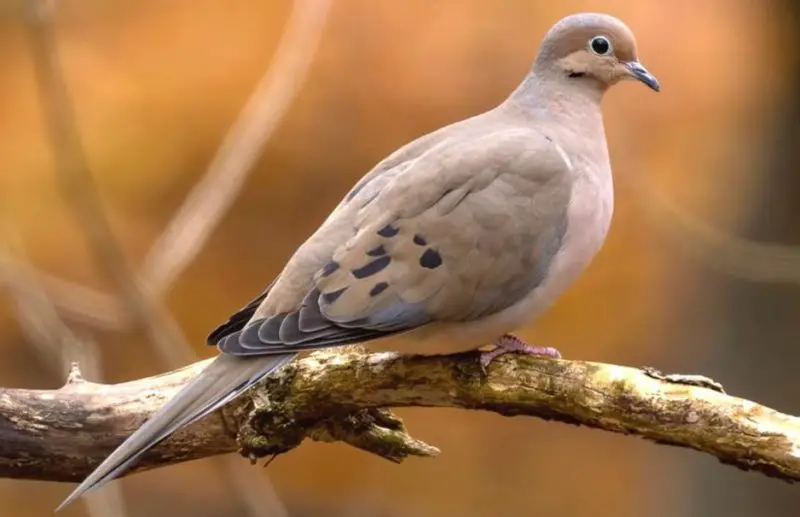
The long tail, plump body, and beautiful, small-headed appearance of the mourning dove are its distinguishing features. Its wings are speckled with black and have a light brown tint. Compared to females, guys are somewhat heavier. The dove is 9.1–13.4 inches (23–34 cm) long, 3.0-6.0 ounces (96–170 g) in weight, and 17.7 inches (45 cm) in wingspan.
In North Carolina, mourning doves are a year-round sight, appearing on 45% of summer checklists and 37% of winter checklists. They can be seen year-round in the lower 48 states, although after mating, they may move from the northern Midwest to southern Canada.
Use platform feeders or scatter millet on the ground to draw mourning doves to your backyard. They also like peanut hearts, cracked corn, nyjer, and black sunflower seeds. They frequently inhabit open spaces or the edges of woodlands, as well as grasslands, pastures, and backyards, where they perch on telephone wires and search for seeds.
Eastern Bluebird

The distinctive features of the Eastern Bluebird include its large, rounded head, huge eyes, large belly, and petite, thrush-like body. While females are grayer on top with some blue in the wings and tail and a less vibrant orange-brown breast, males have a deep blue back and a reddish underside. They weigh 1.0–1.1 oz (28–32 g), are 6.3–8.3 inches (16–21 cm) long, and have a wingspan of 9.8–12.6 inches (25–32 cm).
In North Carolina, eastern bluebirds can be found all year round; they are included in 33% of summer checklists and 35% of winter checklists. Breeders from the northern US and southern Canada go south, although they spend the entire year in southeastern US states.
Installing nest boxes and providing mealworms will draw Eastern Bluebirds to your backyard, especially if it’s a large, open space. They are frequently observed in meadows, where they are perched on low branches, wires, or posts to look for insects.
American Goldfinch
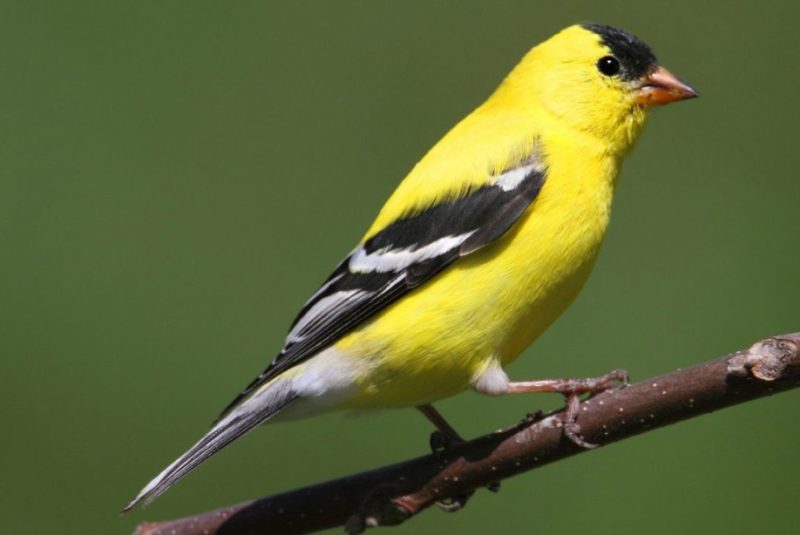
Males of the American Goldfinch can be identified in the spring by their brilliant yellow and black plumage; females and males in the winter have duller brown colors. It is 4.3–5.1 inches (11–13 cm) long, 0.4–0.7 ounces (11–20 g) in weight, and 7.5-8.7 inches (19–22 cm) in wingspan.
In North Carolina, American Goldfinches are year-round residents and can be found on 29% of summer and winter checklists. The majority of North America is home to them, while northern breeders move south for the winter.
Plant milkweed and thistles in your backyard, then fill feeders with sunflower and nyjer seeds to draw American goldfinches. They are frequently observed in backyards, parks, suburbs, overgrown regions, and weedy fields. In North Carolina, you’ll see a lot of yellow birds, particularly in the spring.
House Finch
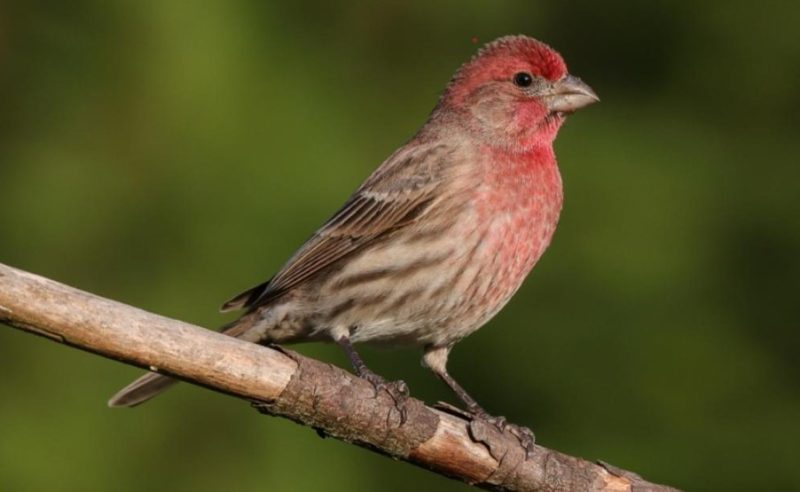
For year-round residents of North Carolina, house finches are included in 26% of summer checklists and 29% of winter checklists. They don’t move.
Female house finches are brown-streaked all over, but males are marked by a red head and breast with brown spots resting on them. Their dimensions are 5.1–5.5 inches (13–14 cm) in length, 0.6–0.9 ounces (16–27 g) in weight, and 7.9–9.8 inches (20–25 cm) in wingspan.
House Finches, who were originally from western US states, were brought to the east and have since flourished, occasionally driving out Purple Finches. They are frequently observed in loud, noticeable clusters and can be found in parks, farms, woodland edges, and backyard feeders.
Use nyjer or black oil sunflower seeds in tube or platform feeders to draw house finches. North Carolina has a surprisingly high population of finches, which contributes to the diversity of birds in the area.
Eastern Phoebe

Eastern Phoebes can be spotted year-round in North Carolina, appearing in 16% of summer checklists and 13% of winter checklists. These plump songbirds are grayish-brown on the back with a whitish underside and a darker head.
Sayornis phoebe measures 5.5–6.7 inches (14–17 cm) in length, weighs between 0.6 and 0.7 ounces (16–21 g), and has a wingspan of 10.2-11.0 inches (26–28 cm).
Migratory birds, Eastern Phoebes breed in northeastern and central US states and Canada before heading to southeastern US states and Mexico for winter. They are often seen alone in quiet woodlands, wagging their tails from low perches.
Their diet consists mainly of flying insects, spiders, and small fruit. Attract them to your backyard with a nest box or native berry-producing plants.
European Starling
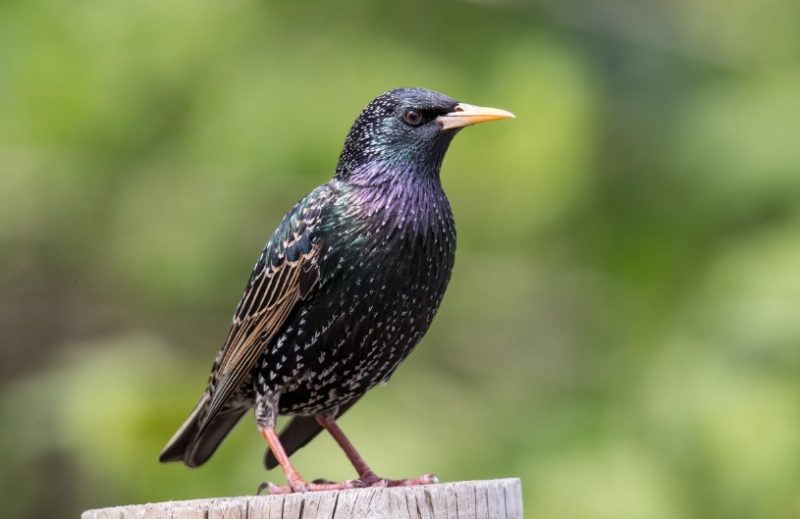
European starlings, an introduced species in North Carolina, are seen year-round. They appear in 17% of summer checklists and 14% of winter checklists submitted by bird watchers.
These stocky black birds are not native but are now among the most numerous songbirds. They exhibit iridescent purple, green, and blue tones. Measuring 7.9–9.1 inches (20–23 cm) in length, weighing 2.1–3.4 oz (60–96 g), and with a wingspan of 12.2–15.8 inches (31–40 cm), they are widespread across North America except northern Canada and Alaska.
European starlings are often seen in large, noisy flocks and are considered pests due to their aggressive behavior. They primarily feed on insects, earthworms, and fruit. To attract them to your backyard, use black oil sunflower seeds, suet, cracked corn, and peanuts.
Northern Flicker
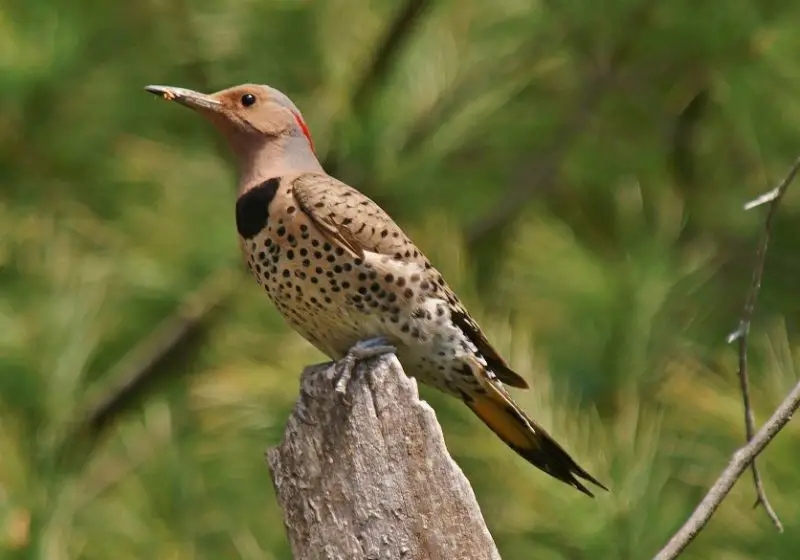
Northern Flickers are seen in North Carolina year-round, with increased sightings during the winter. They are noted in 7% of summer checklists and 16% of winter checklists. These large brown woodpeckers feature black spots, a white rump patch visible in flight, and, in males, a red nape. Depending on their region, they have either red or yellow flashes in their wings and tail: red-shafted in the west and yellow-shafted in the east.
Northern Flickers measures 11.0–12.2 inches (28–31 cm) in length, weighs 3.9–5.6 oz (110–160 g), and has a wingspan of 16.5-20.1 inches (42–51 cm). Northern Flickers are found across the US year-round and in Canada during the summer, with those breeding in Canada migrating south for the winter.
They mainly consume ants, beetles, fruits, and seeds, often foraging on the ground with their curved bill. Attract them to your backyard with suet.
Red-winged Blackbird
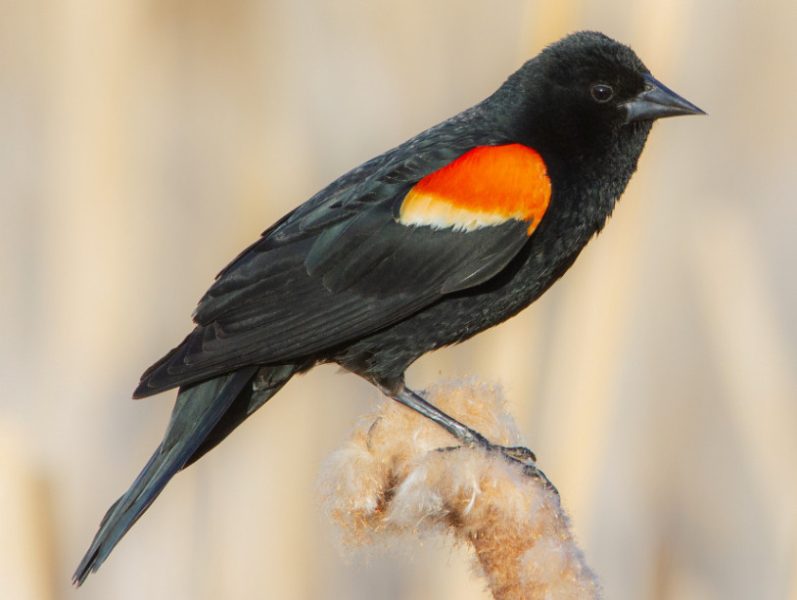
Red-winged Blackbirds are found in North Carolina year-round, with sightings in 18% of summer and 11% of winter checklists. These birds are easily recognizable by their all-black plumage and striking reddish-orange wing patches, while females are a more subdued, streaky brown.
Red-winged Blackbirds measure 6.7-9.1 inches (17–23 cm) in length, weigh 1.1–2.7 oz (32–77 g), and have a wingspan of 12.2–15.8 inches (31–40 cm). They are year-round residents of the lower 48 states and the Pacific Coast of British Columbia. During the breeding season, males aggressively defend their territories and may attack perceived threats. In winter, they form large roosts.
To attract them, offer mixed grain and seeds on the ground or use large tube and platform feeders.
Gray Catbird
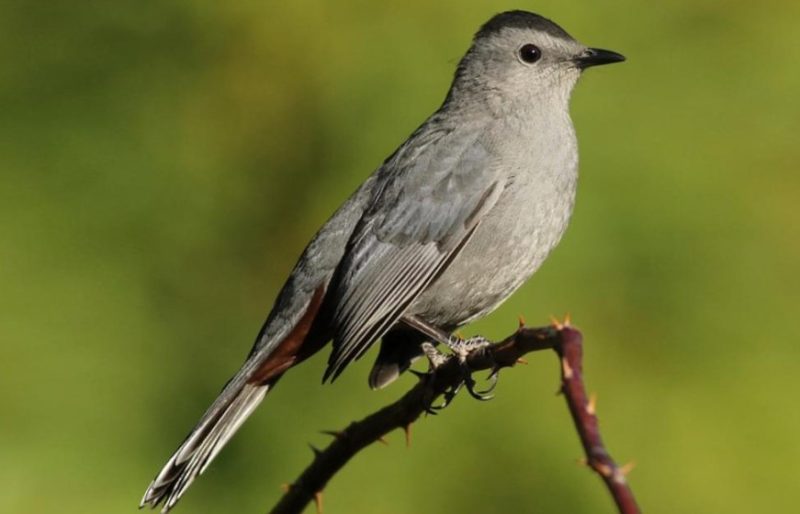
During the nesting season, which runs from mid-April to October in North Carolina, gray catbirds are frequently spotted there; some even live there all year. During this time, they are noted on 22% of checklists. The unique “mew” call of these medium-sized songbirds, which may linger for up to ten minutes, is what makes them famous. Their plumage is slate gray, with a crimson patch under their tail and a black crown and tail.
The Gray Catbird is 8.3–9.4 inches (21–24 cm) long, 0.8–2.0 ounces (23.2–56.5 g) in weight, and measures 8.7–11.8 inches (22–30 cm) in width at the wingspan.
While some stay on the East Coast, gray catbirds breed in the Midwest, eastern US, and southern Canada. They migrate to the Gulf Coast and the Caribbean for the winter. They are frequently found near forest margins, in small trees, and in dense bushes. Provide fruit and plant bushes that give fruit, such as dogwood, winterberry, and serviceberry, to draw them to your backyard.
Dark-eyed Junco
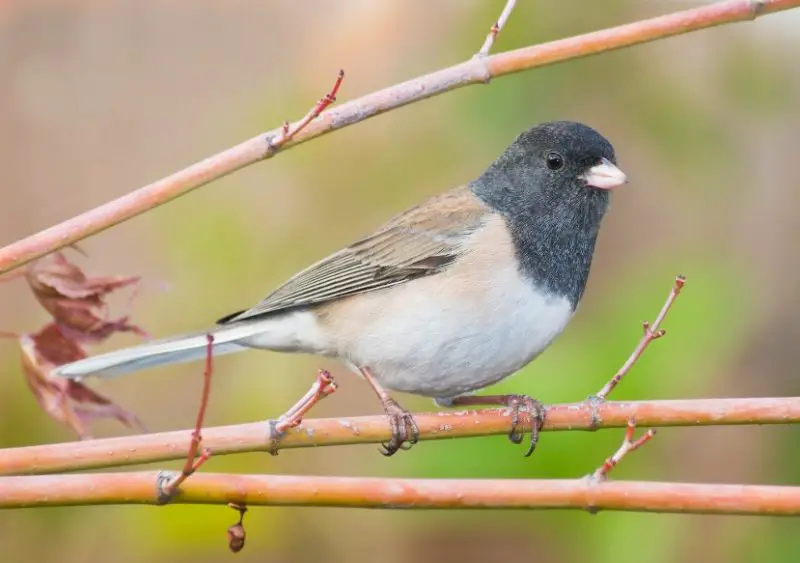
Though some remain all year, dark-eyed Juncos are most frequently observed in North Carolina during the winter, showing up in 31% of checklists from November to March. Depending on where they are, these sparrows have different colors: in the east, they are slate-colored, while in the west, they are black, white, and brown.
The 5.5-6.3-inch-long, 7.1-9.8-inch-winged, 0.6-1.1-ounce Dark-eyed Junco is a year-round resident of the Appalachian Mountains and northeastern and western U.S. states. For the winter, people from Alaska and Canada head south to the United States.
Dark-eyed Juncos are found in both open and slightly wooded environments, where they frequently forage on the ground. Provide a range of seeds, such as peanuts, cracked corn, nyjer, cracked sunflower seeds, and black oil sunflower seeds, on platform feeders or strewn across the ground to draw them to your garden.
Yellow-rumped Warbler
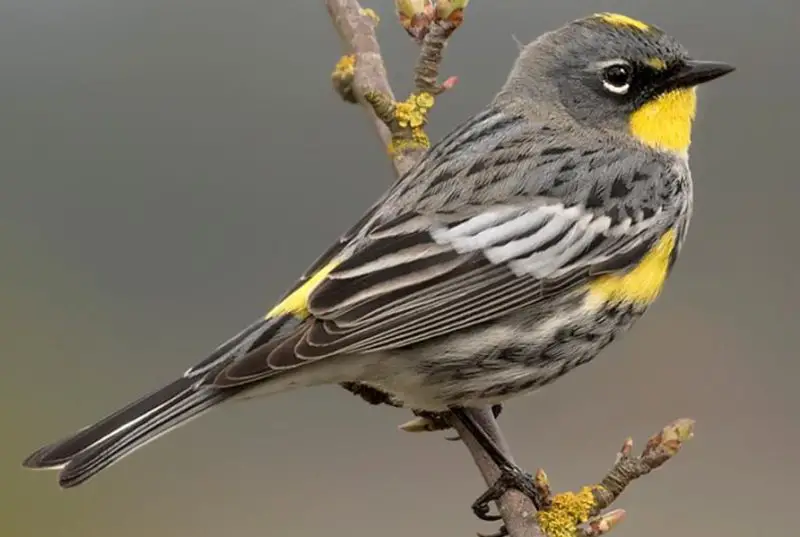
Yellow-rumped warblers are winter visitors in North Carolina, primarily observed from mid-September to May, and appear in 30% of winter checklists. They are distinguished by their gray bodies with yellow flashes on the face, sides, and rump and white wing patches. Females may appear slightly brown, and winter birds are paler with bright yellow rumps, becoming brighter and more vibrant as spring approaches.
Measuring 4.7–5.5 inches in length with a wingspan of 7.5–9.1 inches and weighing 0.4–0.5 ounces, yellow-rumped warblers breed mainly in Canada, the Rockies, and the Appalachian Mountains. During migration, they pass through the Midwest and winter in southern and southwestern U.S. states, the Pacific Coast, Mexico, and Central America.
You can find them in coniferous forests during the breeding season and in open areas with fruiting shrubs in winter. Their diet consists of insects in summer and fruit, such as bayberry and wax myrtle, in winter. To attract yellow-rumped warblers to your backyard, offer sunflower seeds, suet, raisins, and peanut butter. These vibrant and melodious birds are only present for a short time, so make sure to spot them before they move on.
Indigo Bunting
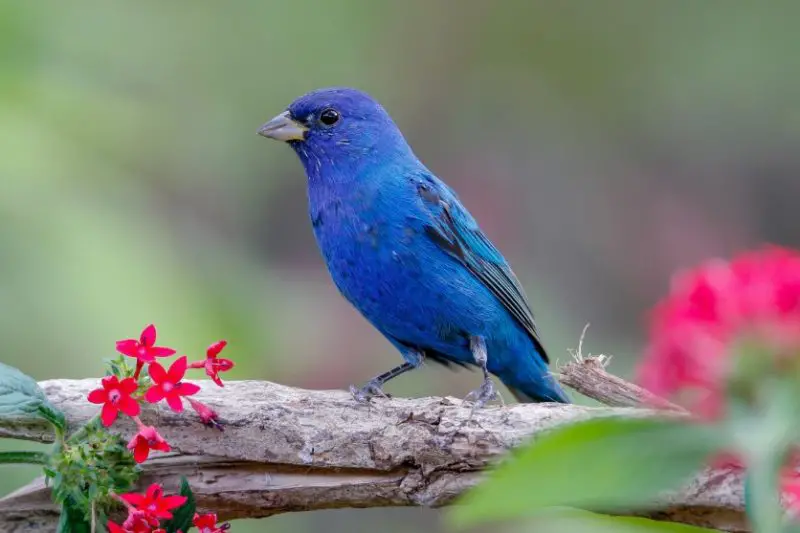
Indigo buntings are commonly seen in North Carolina during the summer, appearing in 26% of checklists from April to October, though some may remain year-round. Males are strikingly bright blue with black streaks in their wings and tail, while females are brown.
Measuring 4.7–5.1 inches in length with a wingspan of 7.5-8.7 inches and weighing 0.4–0.6 ounces, Indigo Buntings migrate from their breeding grounds in eastern U.S. states, southeastern Canada, and southern U.S. states to winter in Florida, Central and South America, and the Caribbean.
They are typically found in weedy fields and shrubby areas, foraging for seeds and insects. To attract them to your backyard, offer small seeds such as nyjer and thistle.
Ruby-throated Hummingbird

Ruby-throated hummingbirds are commonly seen in North Carolina during the summer, appearing in 20% of checklists from April to October, though some may remain year-round. Males are bright green on their back and crown, with a gray-white underside and an iridescent red throat. Females lack the red throat but are similarly green on their back and white underneath, with brownish crowns and sides.
Measuring 2.8–3.5 inches in length with a wingspan of 3.1–4.3 inches and weighing 0.1–0.2 ounces, Ruby-throated Hummingbirds are the only breeding hummingbirds in eastern North America. They migrate south over the Gulf of Mexico or through Texas to Central America for the winter, starting their migration in August and September.
These tiny birds are often seen zipping between nectar sources or catching insects in midair. They occasionally rest on small twigs but cannot walk, only shuffle along perches. To attract Ruby-throated Hummingbirds to your backyard, provide homemade nectar, shade-loving plants, or vibrant hanging plants. They are also common at nectar feeders in flowering gardens or woodland edges.
Northern Cardinal
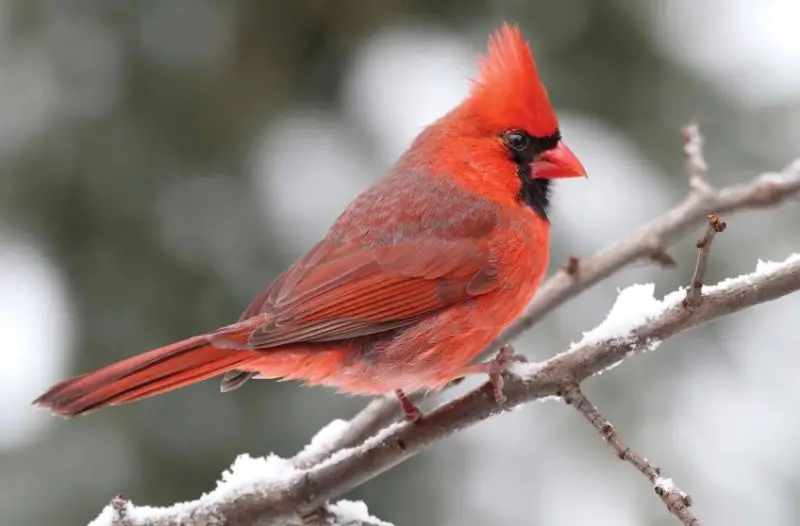
In North Carolina, northern cardinals are year-round residents and are included on 63% of summer checklists and 57% of winter checklists. While females are less colorful, they still have brown feathers with red highlights and beaks, making males visually appealing with their vivid red plumage and black surrounding their faces.
These birds, which are 8.3–9.1 inches long and 1.5–1.7 ounces in weight, are located in thick foliage where they search for seeds, fruit, and insects to eat. Offer them millet, peanut hearts, and sunflower seeds to entice them to your property.
Carolina Chickadee
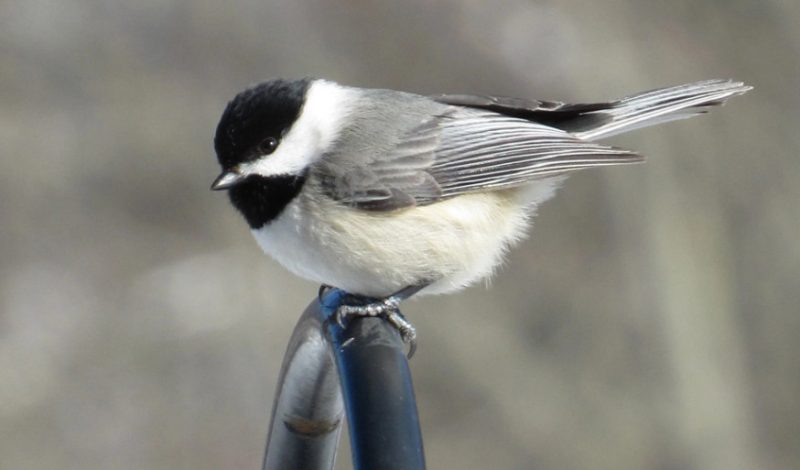
Appearing on 44% of summer checklists and 55% of winter checklists, Carolina Chickadees are year-round residents of North Carolina. These little birds have a length of 3.9–4.7 inches and a weight of 0.3–0.4 ounces. Their black hats, white cheeks, and velvety gray backs make them easy to identify. They reproduce together when their territories intersect, bearing a striking resemblance to Black-capped Chickadees.
Across the eastern and southeastern United States, backyards, parks, and forested areas are home to Carolina Chickadees. Provide black oil sunflower seeds, nyjer seeds, suet, or peanuts at your feeders to draw them in. They will use nest boxes or tubes for nesting, as well as suet cages, platform feeders, and tube feeders.
Carolina Wren
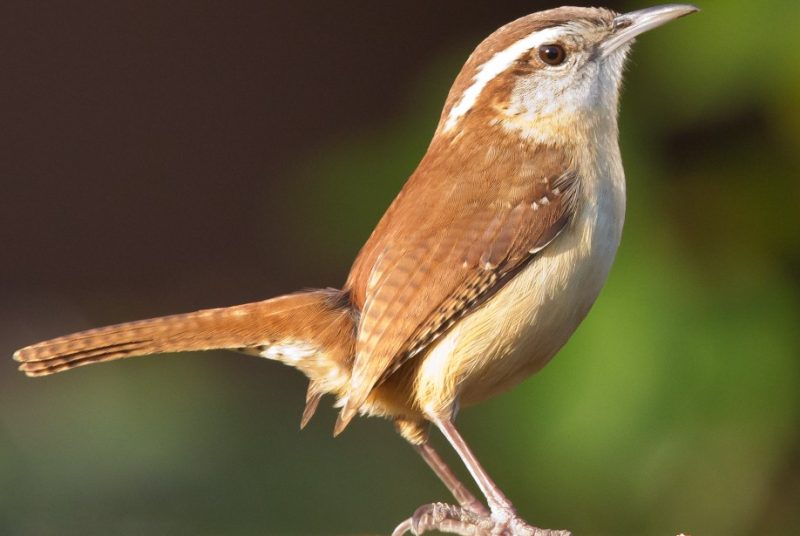
North Carolina residents encounter Carolina Wrens frequently; they are present throughout the year and can be found on more than half of the checklists that bird watchers submit. Having an erect tail and a white stripe along their eyebrows, these timid birds have a dark brown upper body and a light brown bottom. Another thing that makes them famous is their unique “teakettle” song.
Carolina Wrens have a wingspan of approximately 11.4 inches and measure 4.7–5.5 inches in length and 0.6–0.8 ounces in weight. They live in eastern and southeastern U.S. states in wooded or heavily vegetated regions.
Put suet feeders, hulled sunflower seeds, or peanut hearts in big tube feeders or on platforms to draw Carolina Wrens to your backyard. Despite being frequently eclipsed by more flamboyant avian species, Carolina wrens are a worthwhile endeavor to watch and admire.
Tufted Titmouse
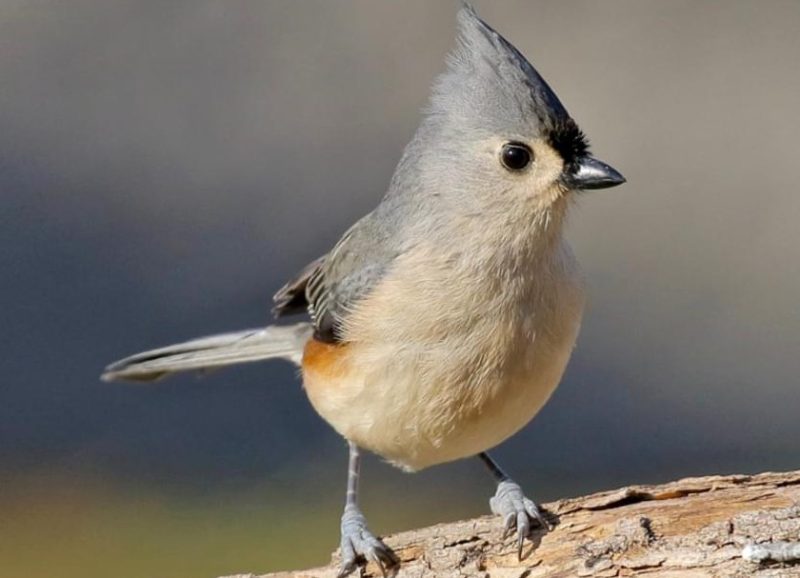
As year-round residents of North Carolina, Tufted Titmouses can be found on up to 44% of summer checklists and 48% of winter checklists. These birds have a characteristic gray crest, big eyes, and a gray back with white undersides. Together with woodpeckers, nuthatches, and chickadees, they frequently form flocks.
Tufted Titmouses are 5.5–6.3 inches long and 0.6–0.9 ounces in weight. Their wingspan is 7.9–10.2 inches. They live in backyards, parks, and forest areas in eastern and southeastern United States states.
Provide peanuts, suet, and sunflower seeds on tube feeders or suet cages to draw Tufted Titmouses. They might use nest boxes for breeding, and they also like platform feeders.
American Crow
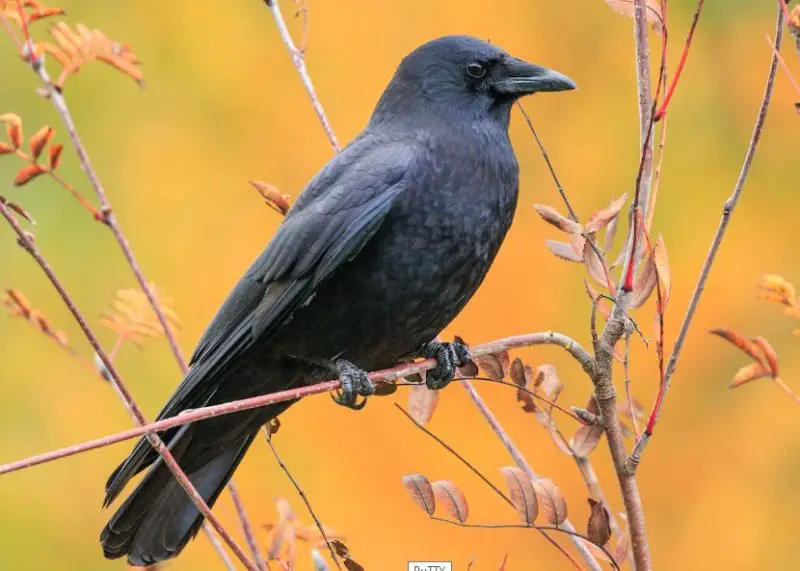
In North Carolina, American Crows are a year-round fixture and can be seen on up to 43% of summer and winter checklists. The characteristic cawing sound of these big, all-black birds is their harsh cawing call.
American Crows are found in most of the lower 48 states, Alaska, and the Pacific Coast of Canada. They are between 11.2-21.9 ounces in weight and are 15.8-20.9 inches in length with a wingspan of 33.5-39.4 inches. People who live in the northern Midwest and Canada move south during the winter.
These adaptable feeders can be found in a variety of areas, such as fields, forests, villages, treetops, and beaches. They consume a broad variety of meals, including fish, mussels, insects, earthworms, and even the eggs of other birds.
Up to two million of them can congregate in these massive, boisterous communal roosts over the winter. Scattered peanuts will bring them to your backyard, but beware—if they find pet food or trash appealing, they could turn into a nuisance.
Red-bellied Woodpecker
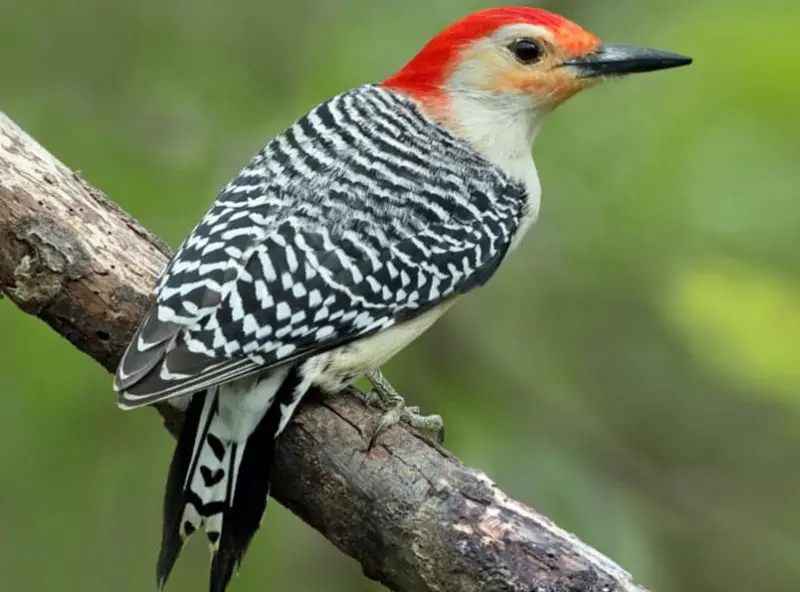
In North Carolina, red-bellied woodpeckers are year-round residents, showing up on 34% of summer checklists and 39% of winter checklists. Because of their red caps, these woodpeckers are sometimes mistaken for red-headed woodpeckers. However, they are smaller, and the females only have red on the rear of their heads rather than on the cap. Their backs are distinctly marked in black and white, but their pale red belly is faint and might be difficult to see.
Red-bellied Woodpeckers are native to the eastern states of the United States and are approximately 9.4 inches long, with a wingspan of 13.0–16.5 inches and a weight of 2.0–3.2 ounces. They are not migratory. They consume fruit, nuts, seeds, insects, spiders, and occasionally nestlings. They build their nests on dead trees and may reuse them every year. They lay four to five white eggs on a layer of wood chips.
Their distinctive 2-inch-long, barbed tongue and sticky salivary secretions aid in the extraction of prey from narrow openings. Red-bellied woodpeckers can be identified by their loud, rolling calls, which they frequently make at bird feeders, especially those close to wooded areas.
Ruby-crowned Kinglet

Ruby-crowned Kinglets are winter visitors in North Carolina, appearing from mid-September to May and recorded in 18% of winter checklists. These small olive-green songbirds are known for the males’ brilliant red crown, which is often flat and hard to see.
Measuring 3.5–4.3 inches in length with a wingspan of 6.3–7.1 inches and weighing 0.2–0.3 ounces, Ruby-crowned Kinglets breed in Canada and the mountainous western U.S. before migrating south to southern and southwestern U.S. states and Mexico for the winter.
These elusive birds are fast-moving and quiet, flitting through lower branches, shrubs, and trees in search of spiders and insects. To attract Ruby-crowned Kinglets, provide suet or platform feeders with hulled sunflower seeds, peanut hearts, and mealworms.
Chipping Sparrow
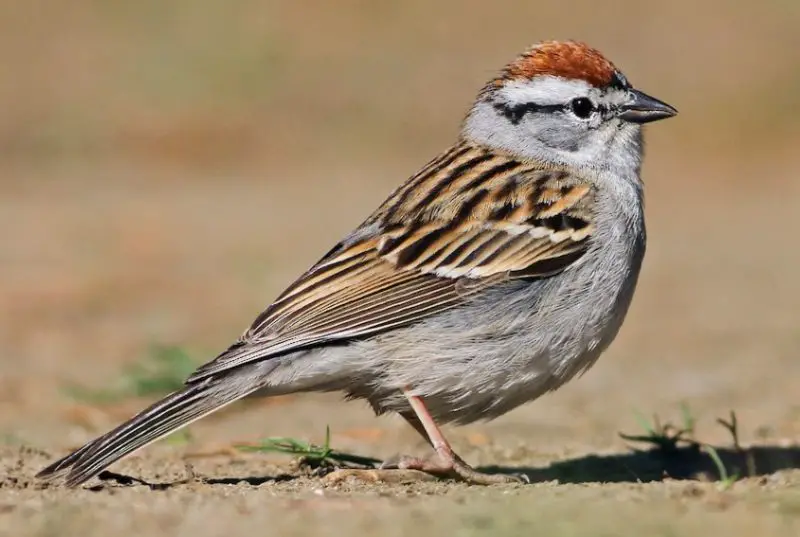
Chipping sparrows are present in North Carolina year-round but are more frequently spotted from March to July, appearing in 24% of summer checklists and 14% of winter checklists. These slender, long-tailed birds have a grayish belly, a brown and black-streaked back, a rusty crown, and a black eye line, though their colors are more subdued in winter.
Measuring 4.7–5.9 inches in length with a wingspan of 8.3 inches and weighing 0.4–0.6 ounces, Chipping Sparrows breed in the U.S. and Canada during the summer and migrate to Mexico and Florida for the winter. Some remain in the southern states all year.
You can find them in small flocks on open ground, and they are attracted to various birdseed in backyards. To attract Chipping Sparrows to your yard, offer seeds or cracked corn on open feeders such as hoppers or platforms. While brown birds are often overlooked, getting to know them can be rewarding. Explore all the brown birds in North Carolina to enhance your birdwatching experience.
Barn Swallow
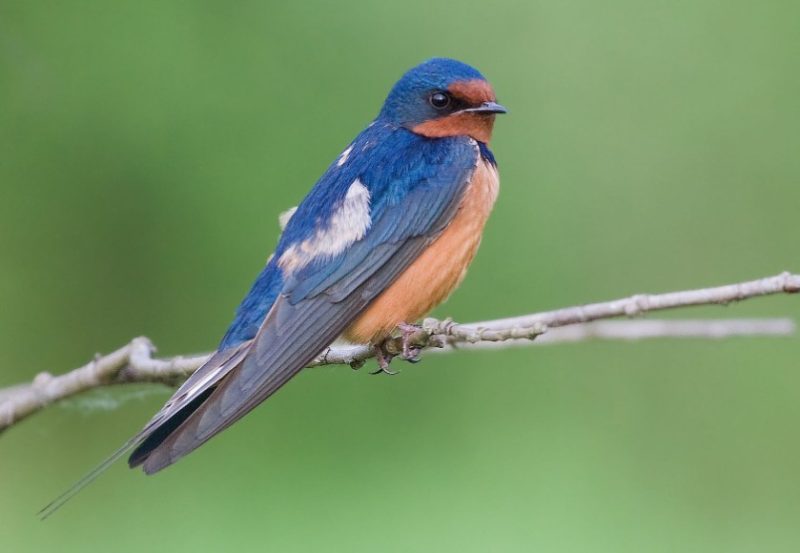
Barn Swallows are common in North Carolina during the breeding season, appearing in 21% of summer checklists from mid-March to October. These small birds have a deep blue back, wings, and tail, with reddish-brown underneath and across the face. Their tail features long outer feathers that create a distinctive deep fork. The dark back can sometimes make them appear black-and-white.
Measuring 5.9–7.5 inches in length with a wingspan of 11.4–12.6 inches and weighing 0.6–0.7 ounces, Barn Swallows breed in Canada and the U.S. before migrating to Central and South America. They are often seen flying over meadows, farms, and fields in search of insects, and they typically build mud nests on man-made structures like barns.
To attract Barn Swallows, consider putting up nest boxes or cups, and they may also feed on ground-up eggshells provided on a platform feeder.
Common Grackle
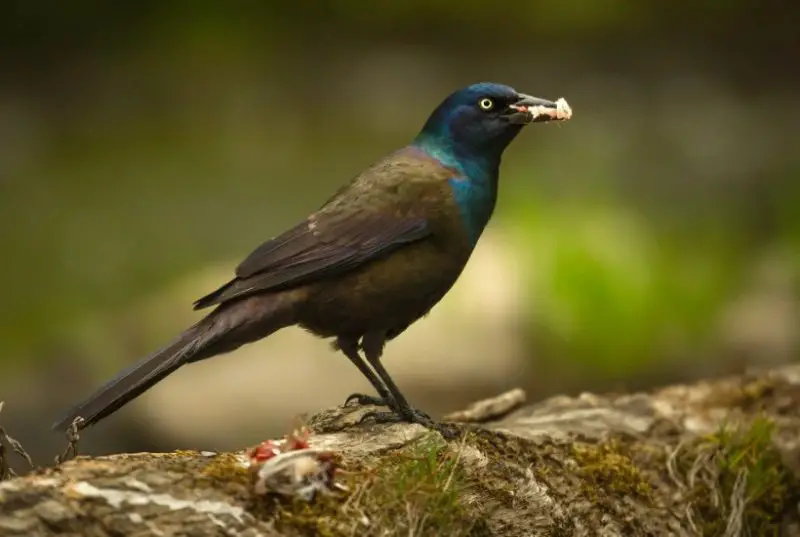
Common grackles, though considered a near-threatened species, are frequently spotted in North Carolina during the summer, appearing in 24% of summer checklists. Most migrate south for the winter, but some stay year-round, with an 8% appearance on winter checklists.
These birds are larger and longer-tailed than typical blackbirds, with glossy, iridescent bodies. Measuring 11.0–13.4 inches in length with a wingspan of 14.2-18.1 inches and weighing 2.6–5.0 ounces, common grackles are residents of southeastern states year-round, while those breeding in Canada and the Midwest migrate south.
Common grackles eat a variety of crops, primarily corn, and often gather in noisy groups in trees. They can also be a nuisance, as they feed on garbage. Their habitats include open woodlands, marshes, parks, and fields. In winter, they may congregate in large numbers with other blackbirds to forage and roost.
To attract common grackles to your backyard, offer mixed grain and seed on the ground or in platform feeders.
White-breasted Nuthatch
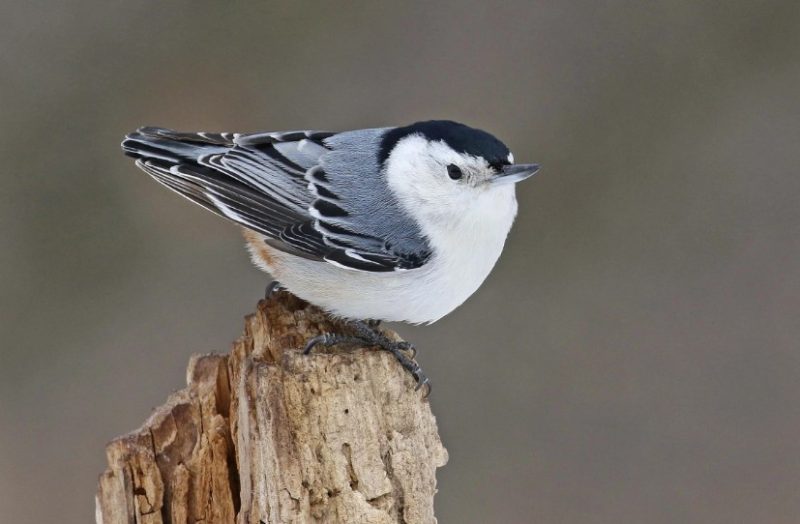
White-breasted Nuthatches are year-round residents in North Carolina, appearing in 18% of summer checklists and 25% of winter checklists. These active birds have a gray-blue back, a white face and belly, and a distinctive black cap, often with a chestnut color on the lower belly and under the tail.
Measuring 5.1–5.5 inches in length with a wingspan of 7.9–10.6 inches and weighing 0.6–1.1 ounces, white-breasted nuthatches are found year-round across the U.S. and southern Canada. They inhabit deciduous forests, woodland edges, parks, and yards with trees, and are frequent visitors to feeders.
Their diet primarily consists of insects such as beetles, caterpillars, and ants, along with seeds and nuts like acorns, hawthorns, and sunflower seeds. They often wedge large nuts and acorns into tree bark and use their bills to open them.
To attract white-breasted nuthatches to your backyard, offer sunflower seeds and peanuts on tube or suet feeders.
Song Sparrow
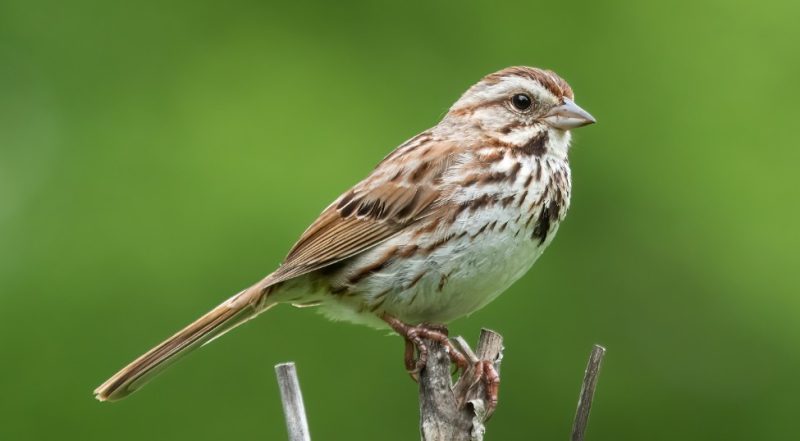
Song sparrows are commonly spotted in North Carolina during the winter, appearing on 32% of winter checklists. They are prevalent from October to April, though some remain in the western part of the state year-round and appear in 18% of summer checklists.
These predominantly brown-streaked birds may not be as striking as other backyard species, but their almost constant singing in spring and summer is a key feature. Song sparrows measure 4.7–6.7 inches in length with a wingspan of 7.1–9.4 inches and weigh between 0.4 and 1.9 ounces.
Song sparrows live year-round in northern U.S. states, while those breeding in Canada migrate south for the winter. They are often found in open, shrubby, and wet areas, frequently perched on low shrubs and at backyard feeders.
Their diet includes a variety of insects, such as beetles, caterpillars, and spiders, as well as plants like buckwheat, sunflower seeds, and berries.
To attract Song Sparrows to your backyard, offer black oil sunflower seeds, cracked corn, and nyjer on platform feeders.

